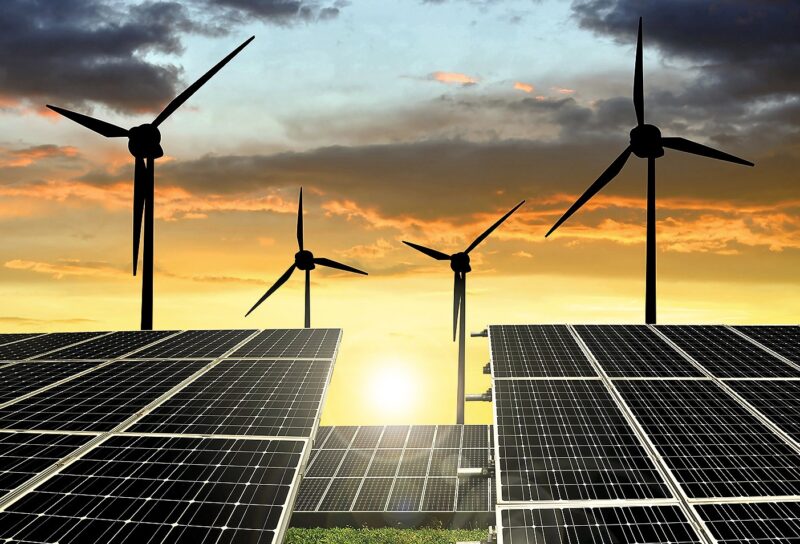World News12.09.2024
Renewables generated 40% of global electricity for first time ever in 2023

GREEN. According to two new reports from BloombergNEF (BNEF), the global clean energy transition has reached significant milestones and is poised to continue at its current pace. Last year for the first time more than 40 percent of the planet’s electricity was generated by zero-carbon sources — 14 percent from solar and wind, Pressenza reports.
In 2023, nearly 91 percent of net power capacity additions worldwide were from solar and wind — up from 83 percent in 2022 — compared with six percent from fossil fuels, the lowest level ever, a press release from BNEF said.
“We have seen a step-change in renewable energy compared to a few years before. There’s now no question this is the largest source of new power generation, wherever you go.” said Sofia Maia, lead author of Power Transition Trends 2024.
The first half of this year brought $313 billion in new renewable energy investment, which was comparable to the same period in 2023. Renewables made up almost a third of power generation worldwide in 2023, up five percent year-on-year.
According to the reports, hydropower made up 14.7 percent, solar and wind a record 13.9 percent and nuclear 9.4 percent.
Findings from the reports, both published by BNEF — the 2H 2024 Renewable Energy Investment Tracker and Power Transition Trends 2024 — indicated that momentum toward green energy has accelerated.
China continued to dominate new renewables investments, despite less expensive equipment leading to a four percent decline. In the first six months of 2024, the United States was the world’s second largest market and has seen a 63 percent increase in half-annual investment levels since the passage of the Inflation Reduction Act. During the same period, Pakistan jumped from being the 14th-largest new solar investment market last year to the fifth-largest in 2024.
The most comprehensive energy generation data and capacity review in the world, Power Transition Trends looks at 140 markets, as well as international aggregated data, to highlight energy transition patterns and nations’ progress in decarbonizing their economies.
BNEF’s Renewable Energy Investment Tracker is a biannual calculation of new global renewable energy capacity investment, as well as of the equity produced by specialist companies.
Power Transition Trends found that total power-generating capacity worldwide reached 8.9 terawatts last year. Wind power now makes up one terawatt of installed power capacity. In 2023, 428 gigawatts of solar energy capacity was added — a 76 percent increase year-on-year — bringing total installed solar capacity worldwide to 1.6 terawatts.
“Ten economies accounted for nearly three-quarters of total renewable energy generation in 2023. Mainland China stood head and shoulders over its next-nearest competitor – as it has for a decade – with nearly one-third of all global renewable energy output last year. The U.S., Brazil, Canada and India rounded out the top five, which accounted for 60% of the world’s renewable generation last year,” the press release said.
The first half of this year saw wind investment reach $90.7 billion, which was 11 percent lower than the same period in 2023. Offshore wind experienced an especially pronounced dip. Onshore wind is facing frequent grid interconnection and permitting challenges, but wind projects continue to move forward, though not with the same momentum as solar.
Solar investment during the first half of this year reached $221 billion for small- and utility-scale assets, but there were indications that the growth rate was slowing as less expensive modules meant less required investment for the same capacity and grid bottlenecks began to stall some markets.
“Oil majors may be reducing their focus on renewable energy, but this hasn’t made a dent in global investment,” said Meredith Annex, Renewable Energy Investment Tracker’s lead author, in the press release. “It’s clear that if there are projects ready and able to move forward, the capital will come. The focus should be on simplifying wind and solar development around the world.”
Kazakhstan and UAE reaffirm strategic energy partnership with 1 GW wind project
Solar becomes EU’s top power source for the first time ever
How decentralised renewables transform healthcare services in rural Zimbabwe
Chinese company to build solar and wind power plants in Kyrgyzstan
Seaturns raises €2.45 million to industrialize wave energy technology and accelerate global rollout
Trump signs executive order to end subsidies for wind and solar energy
Uzbekistan's solar and wind power plants generate 5 Billion kWh since beginning of the year
Green Corridor Alliance JV registered in Baku to promote green energy development in Central Asia and the South Caucasus
In the EU renewable energy supply grew by 3.4% in 2024
IRENA accepting renewable energy project proposals in Central Asia until August 15
Astana to host Electronica Expo Kazakhstan Electronics Exhibition
WB gives rundown of Azerbaijan's green energy grid volume prospects
US solar sets new records as renewables nearly match natural gas – EIA
‘Wings’ on poles: Bill Gates-backed breakthrough wind turbine facility breaks ground
Perovskite tandem solar cell achieves new efficiency record
Kazakhstan and China endorse draft SCO joint statement on sustainable energy development
Innovative research on organic solar cells for space applications
Kazakhstan and Uzbekistan drive green energy progress in Central Asia
KazMunayGas launches pilot green hydrogen project in Atyrau
How private homeowners in Kazakhstan can make money from solar panels











